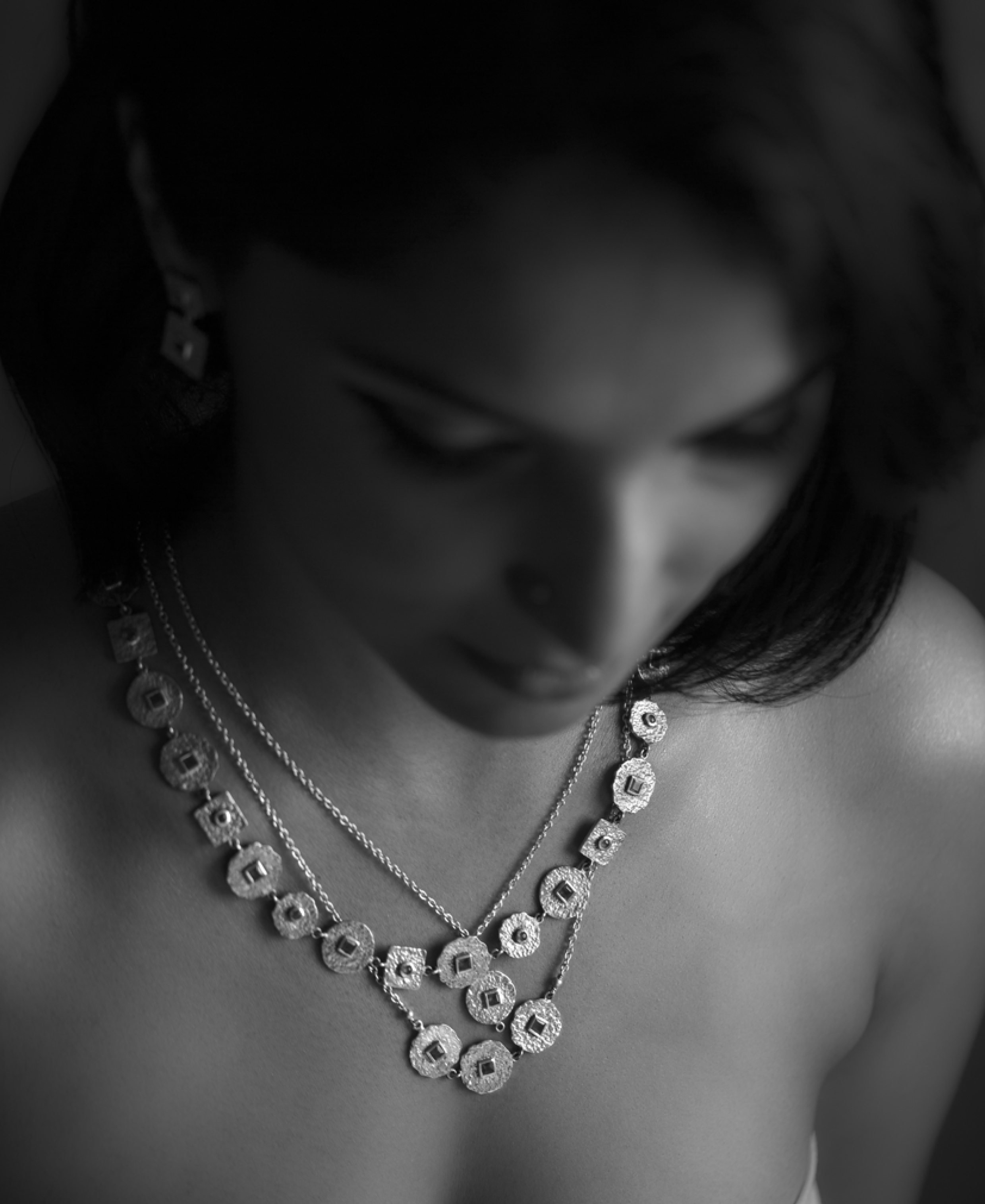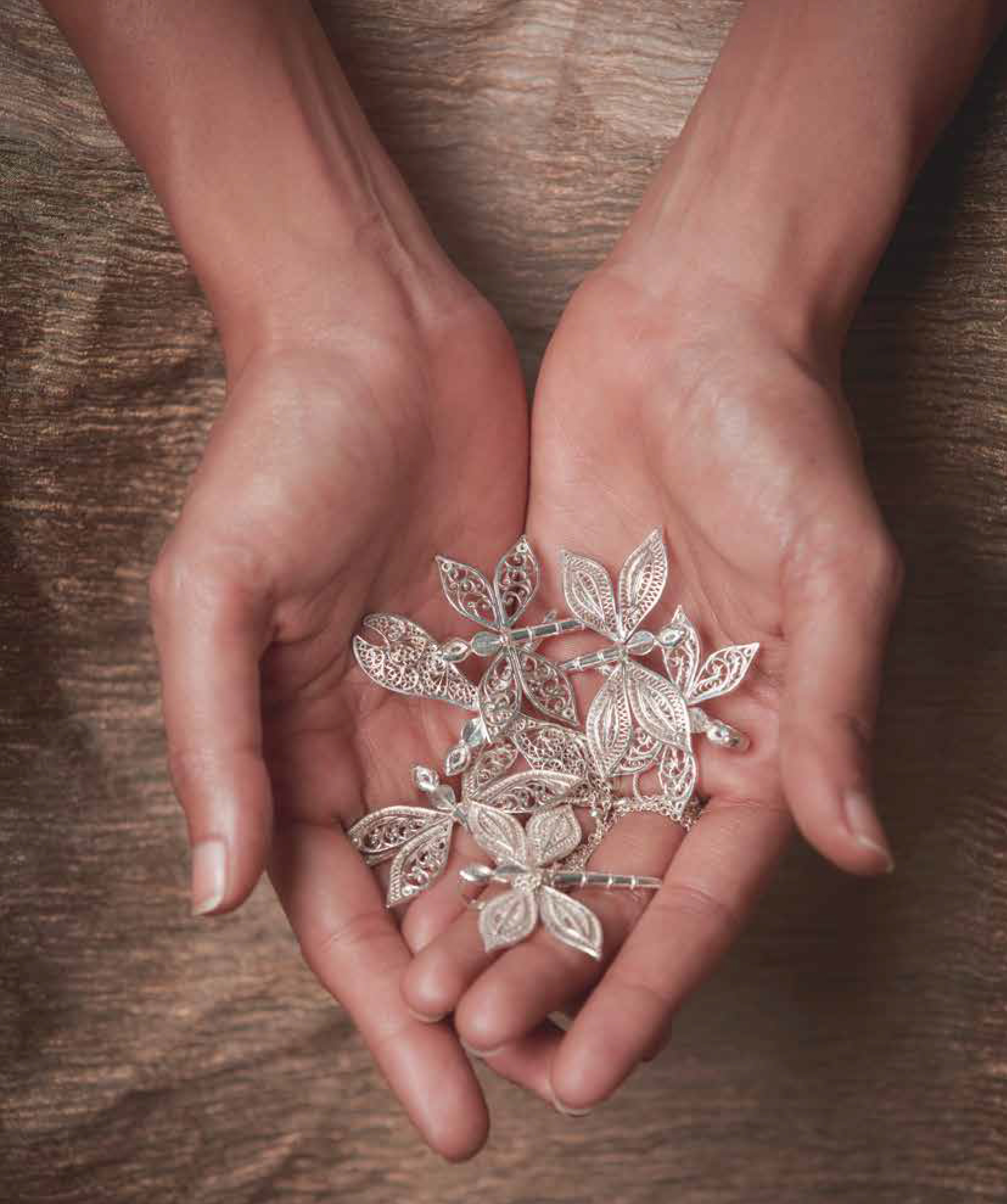The Jewelry Project is the passion project of founder Deepti Sudhindra. Based in Bangalore, the Jewelry Project aims to marry traditional craftsmanship from skilled artisans with a refined, global-minded design sensibility.
Can we discuss a little bit about the importance of sustainability in your work, and in a global economy?
If we have to live and secure a safe planet for the future, we must redefine our practices today. Seek a new balance. We have to find a new balance for sustainable, conscious design that benefits both the designers and creators, and the planet. I am redefining this for myself, as I look at what growth should mean for The Jewelry Project right now.
I’m curious to know more about your environmental efforts. Do you feel there is any relationship between environmental responsibility and the production of high-end jewelry? Is there a way to responsibly source rare jewels and metals?
Yes, there is always a responsible way. Women’s collectives in Sir Lanka are mining in the traditional methods, by hand. There are many smaller groups, adapting to change. With metal mining we have to slow down; work more closely with geologists. I always ask ‘where did this come from?’ ‘who cuts the raw material?’ Since jewelry is made of natural material, we can be conscious every step of the way. I have never been a proponent of assembly line jewelry making. It just zaps the beauty out of holding a handmade piece in your hands. These are two separate worlds; workshops and factories.
Your website mentions “Learning from ancient metal-smithing skill sets, The Jewelry Project works with craftspeople to restore, revive and reinterpret the living culture of jewelry in India.” How do you balance referencing the past and looking to the future?
That balance is an inner aesthetic alarm bell. How much is too much? How little is too little? My design practice helps me to recognize that balance when it happens. The last decade really opened up my design mind. Instead of running away from what was perceived as traditional ‘Indian’, life asked me to look deeper than just the surface about traditional Indian art and design. Mystical, mysterious, minimal, ornate; I found so many aesthetics at play here that tell a story.
I’m curious to hear about the process of producing your jewelry. What is your design process like?
I produce my jewelry mostly by hand. We still use a hand rolling mill. I produce on a small scale, and slowly as handmade allows you to do. I don’t repeat too many pieces or designs. I strive to always create new pieces and play with new ideas. In a decade, we have 54 stories of design, a dozen or so metal-smithing techniques, and a global clientele. We are a small studio, and that helps me find roots and depth in our work.
In a time where “fast fashion” is becoming such a global phenomenon, I would like to know the opinion of a designer who works on a more artisanal scale.
Fast fashion, to me, is boring. It is a great business, I suppose. But, it is not good for Mother Earth, and does nothing much to celebrate style. The fabric; the textile; the assembly line jewelry. I have never been a supporter.
We, as a world, don’t like the slow anymore. When we look to find our identity again it will be found in the timeless stories of design, art, and culture. We are just it’s custodians now.
Addendum
Some beautiful fall color from my dear friend Elizabeth's house in Vermont.








